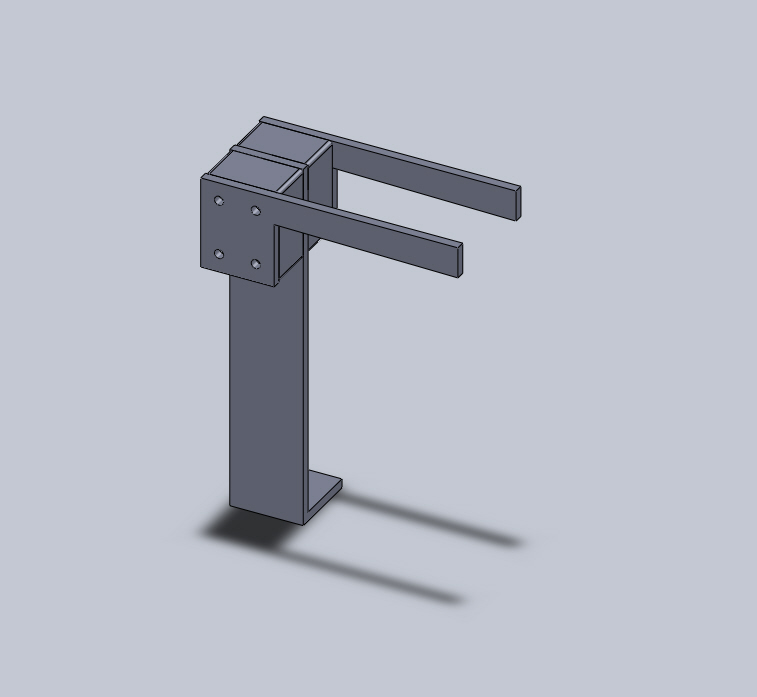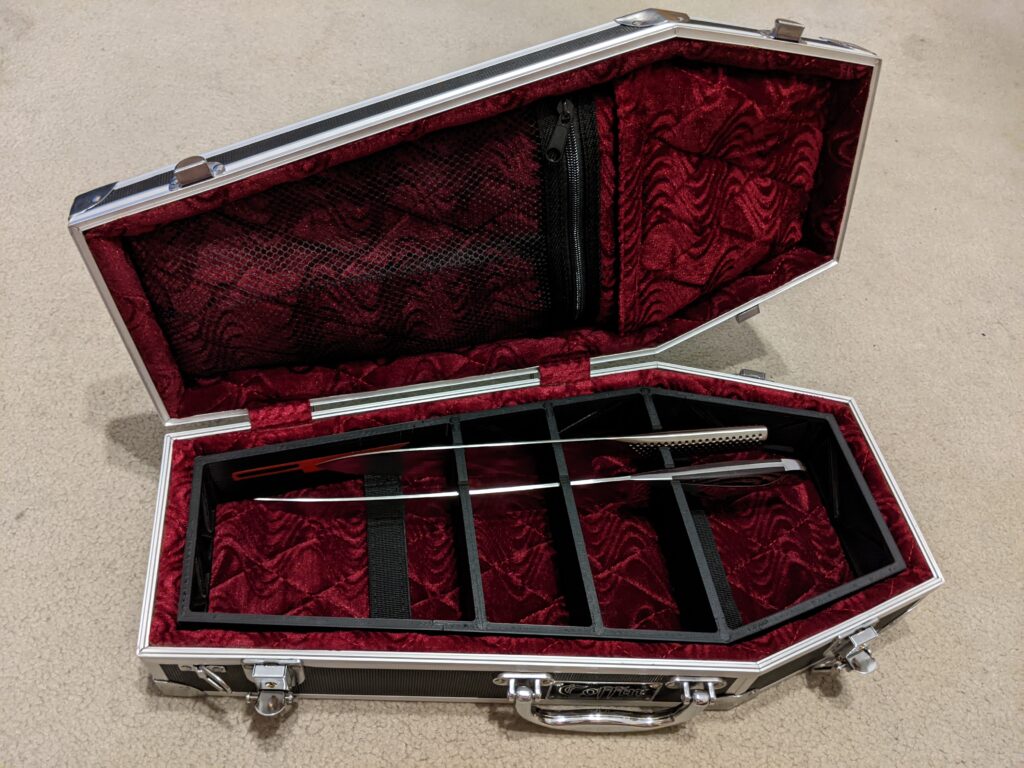Honda HRR & HRS Model Update


The largest project Jesse was involved in was the model update for the HRS and HRR mower models. The purpose of the project was to improve manufacturability by incorporating several shared parts between the two models. For this project Jesse’s role as a Test Engineer included
– Building the prototypes of all the new shared components using various methods including milling, waterjet, welding, and 3D printing.
– Leading the build project to assemble complete built units to perform various tests such as field durability and vibration once vendor samples were obtained.
– Managing the Test Technicians when running long term tests and performing many regulatory and performance tests himself.
– Designing and constructing new test equipment needed for this project and various other projects being worked on by the department.
– Writing test reports and presenting results to the department to determine if the new designs were successful and should be put into production.
After testing was completed and the units went into production, they became highly rated by Consumer Reports as top 10 residential mowers in their price ranges until they were replaced by the HRN model.
Honda 2 Stage Hydrostatic Snowblower

Jesse’s first assignment at Honda was the testing of the large 2 stage snowblower. The goal was to ensure that the new designs were ready for production by testing every aspect of the machine ranging from basic function to product life and durability. Jesse spent a year performing various duties to accomplish the successful launch of this product.
– Conducted field durability testing to ensure functionality for the entirety of the product life cycle.
– Ran various hydrostatic transmission tests.
– Penetrant dye tested parts to verify no parts or weld during testing.
When this product went onto the market it quickly rose to be one of the top rated two stage snowblowers by Consumer Reports within its first year where it has remained.
Sound Proof Test Cell

Between testing projects Jesse was also one of the engineers in charge of test facility maintenance and upkeep. One of these projects was the refit of one of the soundproof test cells in the shop area. This was needed due to the age and continued used of this test cell. During this project Jesse collaborated with another Test Engineer to accomplish the various tasks required to get the project done on time.
– Researched soundproofing materials and testing the various options to find the best choice.
– Installed soundproofing tiles.
– Removed rust and degreased metal floors.
– Reinstalled all test equipment.
The result was a cleaner more effective test cell that had reduced noise levels in the shop area when engine tests were running.
Dynamometer

As a Test Engineer at Honda Jesse not only conducted tests of products but was also a designer and builder of test equipment. The first test machine Jesse built was a new dynamometer. A larger version of the test stand was needed to accommodate the wider range of equipment being developed by the R&D team.
– Defined the parameters of the new test stand.
– Designed entire machine including frame, platform, and roller.
– Fabricated all components using waterjet and MIG welder.
The completed test stand successfully met all need and can now be used on all mowers and wheeled snowblowers produced by Honda Power Equipment.
Alignment Robot

Jesse’s first design project outside of school was to design, build, and install an alignment robot for Denso Manufacturing. This robot was to align the two pieces in an oxygen sensor heater core for assembly. The need came from the necessity to have the parts correctly aligned so later steps in the manufacturing process would not be slowed down while Assembly Line Associate corrected the alignment.
– Defined the parameters of the design
– Designed the robot to be made from few parts, easily assembled, installed, and as inexpensive as possible.
– Assembled the robot and supervised the installation into assembly machines.
Once the robot was installed it correctly kept the alignment of both pieces of the heater core and reduced down time in later assembly steps.
2014 TTU Formula SAE Car

While in college Jesse was on the Formula SAE Team where he developed a formula style racecar. The team had been on a four-year layoff from competition a new approach was needed to get the team back into competition. Jesse then worked with the faculty advisor to determine what that direction should be and then spearheaded many of the tasks required to build the new racecar.
– Designed the aluminum monocoque frame, suspension, drive train, and rear wing of the 2014 car.
– Built the initial mockup of the car to verify design.
– Performed FEA simulations on car frame.
– Assembled monocoque frame.
The car was completed on time and raced in the 2014 Formula SAE Michigan race where Tennessee Tech came in at 100th place.
3D Printed Throttle Body

While designing racecars on Tennessee Tech’s Formula SAE team Jesse managed members of the drive train team and developed a rotating gate throttle body. This type of throttle body has very smooth movement and less turbulent airflow than standard butterfly valves. Because Jesse supervised team members it was necessary to be involved with may of the development steps including
– Research of rotating gate throttle bodies.
– Performed flow calculations.
– Assisted drive train team members in the design of prototypes.
– Installed into engine and tested performance.
During testing the throttle body performed perfectly and the engine power curve stayed approximately the same meaning the air flow into the engine was equal to a standard throttle body with a butterfly valve even though the air way was smaller in the prototype.
AS A MAKER
Custom Guitars and Amps

After Jesse had been working as an engineer for several years, he decided it was time to add to his maker knowledge and he enrolled at The Musicians Institute Guitar Craft Academy in Nashville Tennessee. To graduate he was required to build two fully functional guitars one for the electric guitar course and one for the acoustic guitar course.
– Designed guitars, selected materials, and hardware.
– Prepared materials, performed all woodworking, assembled electronics.
– Painted guitars to make them look good while giving them a protective clear coat layer.
– Completed final assembly and set up of guitars.
At the end of both courses Jesse had successfully completed both guitars which worked excellently and are still played by Jesse to this day.
3D Printed Les Paul

A little after graduating from Musicians Institute Jesse had a thought “I wonder what it would take to completely 3D print a guitar.” so he set out to find the answer. Along the way Jesse had many tasks he completed.
– Designed a guitar based on a classic design and able to be printed in a Dremel Idea Builder 3D20 printer.
– Performed FEA simulations making sure the guitar would survive the stress it would be under once the strings were tensioned.
– Printed components using PLA plastic.
– Assembled guitar from printed components, metal hardware, and electronics.
– ROCKED OUT!!
When the guitar was completed, it was played and compared to multiple traditionally made electric guitars in his collection and was also took to Nashville and played by professional musicians. The consensus was that it was equal to traditional guitars made from wood.
Bookshelf

While in college Jesse needed a way to store his growing collection of textbooks, books, and other items. So, he decided a bookshelf was the best solution for a college student who lived off campus. Because Jesse had never built a bookshelf before he traveled back to the family farm where they have a wood working shop. While there he:
– Designed shelf to be small enough to be carried by one person, transported in a small truck, and still strong and large enough to hold the weight of the books.
– Selected material to keep the cost down.
– Built the shelf with another family member to guarantee the quality of the final product.
The shelf turned out excellent. It met all needs and looked nice in his home. Since the shelf was built it has travelled with Jesse wherever he has gone and will continue to be a well-loved piece in his home.
Coffin Knife Case

One weekend Jesse was watching Food Network and one of his favorite celebrity chefs Jet Tila had a Coffin Case as a knife case, but Tila’s was disorganized with things just put in however they would fit. While the idea of a knife case with style made from coffin case won him over the need to have it more organized was a necessity. To accomplish this Jesse developed and 3D printed a rack system that would fit inside the case without damaging the liner and hold all the knives and other utensils and can be reconfigured to accommodate different knives and other tools.